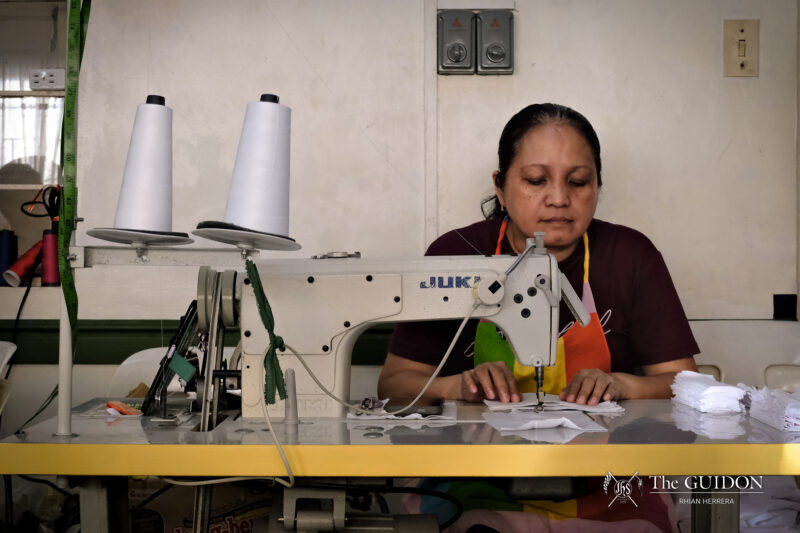With crowds constantly lining up at movie theaters for Hollywood blockbusters, the independent movie scene finds its place in local film festivals. The culture of film-viewing among Filipinos has been around since the 1970s and has long since evolved to cater to the various tastes of its audiences. However, local independent—or indie—films still face the challenge of remaining in theatres in spite of good reviews.
Despite indie film’s seeming obscurity, local critics and film festivals aim to promote an appreciation for independent cinema; given how deeply embedded film-viewing has always been in Filipino culture, the challenge is also for indie films to remain competitive and accessible in changing times.
Creatures of habit
Looking into how Filipino audiences have historically viewed films, the concept of colonial mentality continues to prevail. As famed actor Tommy Abuel—known for films Dagsin (2016) and Manila in the Claws of Light (1975)—is quoted to have said in an Inquirer interview, “For most Filipinos, anything foreign is good. [Our colonizers] suppressed our sense of national pride and inculcated in us that foreign products are better. We grew up being in awe of foreigners.”
Foreign films brought in erotic and violent themes during the early 1900s followed by animated films and action flicks to cater to more audiences. Inspired by this, Filipinos began to mass-produce works of similar genres—resulting in an era that churned out films with poor artistic value and repetitive storylines.
Such tropes still persist in films of the 21st century. Some “mainstream” films such as Praybet Benjamin (2011) and Gandarrapiddo! The Revenger Squad (2017) have proven this trend by employing slapstick comedy and cheap visual effects in their production. While the aforementioned have been typically favored in local theaters, it’s Filipino independent films like Serbis (2008), Kinatay (2009) and Ma’ Rosa (2016) that have managed to make a name for itself overseas.
Despite this, independent films have not done too well in the box office due in part to their tendency to tackle more serious issues. Aside from this, Filipinos seem to favor mainstream comedy films that feature the usual band of celebrities as evidenced by the country’s top-grossing films as of September 2018.
The problem with production
Producing a movie that will cater to the Filipinos’ acquired taste is one thing—having the means to bring the film to the table is another. Independent filmmakers rely on grants given from film festivals to make their films, but these grants are barely enough. While mainstream films can afford to have budgets that start at Php 10 million, some independent films would be lucky to receive a Php 500,000 loan.
This contrast hinders small-scale films from fully expanding their scope—an issue emphasized by independent directors who lament about having to beg and borrow for the production of their films.
Despite this limitation, independent filmmakers still value these festivals for the exposure—albeit minimal—and support it provides for their work.
One such festival is the Cinemalaya, which takes place every August. According to its website, the festival is committed to “[helping] develop and support the production of cinematic works of Filipino independent filmmakers.” It is no wonder, then, why local filmmakers often make their debut at the festival, turning Cinemalaya into a venue for cinephiles and producers alike to gather and celebrate local film.
The support independent filmmakers receive from festivals like Cinemalaya can be integral to their eventual penetration of mainstream media. In fact, indie films like Ang Babaeng Sa Septic Tank (2011)—a Cinemalaya-born film turned mainstream success—and the largely celebrated Heneral Luna (2015) provide hope for struggling independent filmmakers and prove that limitations do not equate to failure.
Absent audiences
As indie films begin to gradually hurdle production setbacks, they find themselves facing a more external hindrance in the progression of local film. According to University of the Philippines Film Institute Assistant Professor Richard Bolisay, a major indicator of a film’s success will always be the public’s support.
The economic aspects of this show of support cannot be overlooked. In reality, going to the movies, given the average movie ticket price of Php 270 to Php 350, may not be a priority for minimum wage earners who receive Php 500 to Php 537.00 daily in the National Capital Region.
“We [Filipinos] understand the economic situation of the country,” Associate Researcher for the Institute of Philippine Culture Skilty Labastilla says. “People cannot, for the most part, [afford to watch movies]… half don’t have the resources and the time to go to the cinemas.” This barrier is evident in the prevalence of the piracy industry in the Philippines.
In addition, Filipino audiences are not likely to “take risks in the films they see.” They have been shown to favor romantic comedies and feel good flicks over the realistic takes of independent movies. Critics point out that this could be because audiences have the tendency to seek out movies with “eye candy” instead of substantial plots—a contributing factor to why most movie-goers have opted to watch television instead.
Although local indie films have the potential to entertain and enlighten, access to it remains to be a privilege amid issues of poverty and personal preference.
Courtesy of the critics
While the industry continues to try and break down barriers on accessibility, local film critics do their best to guide audiences towards films that are worth their buck. For instance, Labastilla emphasizes that while all works intend to be well-meaning, there are still some films that may give off the wrong message. Labastilla believes it is the responsibility of the critic to help inform audiences about the conscious and subconscious messages a film intends to communicate. “Films have their own ideologies, and it’s the responsibility of the film critic to sort of understand where particular films come from,” he says.
Given how not all films strive to be progressive, he explains that listening to critics could be beneficial in helping audiences appreciate not only the surface level elements of film such as cinematography, acting, and directing, but also aid in spreading awareness of the underlying tropes, ideas, and values of a story. This goes to show that, as Bolisay says, “Hindi lang siya form of escape, hindi lang siya form of entertainment.”
([Film] is not just a form of escape, nor is it just a form of entertainment.)
After the credits roll
How exactly does film go beyond escapism and enjoyment? Indie films such as Liway (2018), ML (2018), and Citizen Jake (2018) may point to the answer. Having received critical acclaim for their various Martial Law narratives, the aforementioned movies prove that small-scale filmmakers can not only create quality films, but also spark discourse on the issues they touch upon.
These films are filled with messages that transcend the typical light-hearted themes and require critical interpretation to unpack. With this, it is no doubt that there is a capacity for them to incite change in various ways. Loyola Film Circle President Andie Bernas (4 AB IS) shares her thoughts on how films can change a country. “Changing a country is all about changing the mindset of people,” Bernas says, asserting film’s power to change people’s perceptions. “[Film] changes the way people think and the way they perceive things.”
Similarly, Labastilla states that “Films are very powerful.” “[Filipinos] don’t read much, nor […] visit museums a lot,” he explains. Hence, Labastilla makes the claim that “film is the most successful form of art now in the Philippine context.”
So as the lights return to the theatre and audiences file out of the cinema, independent local artists and critics alike await Cinemalaya’s return in August. Appreciating a film once it’s over shouldn’t be the end-all-be-all for moviegoers—there is always much to be discussed outside the theatres after the credits roll.







